THE NATURAL HORSE
A horse’s natural instinct is-
TO stay in a herd

This basic instinct affects how the horse behaves in all situations. Most horses when deprived of horse company will be affected in a negative way. By staying in a herd the horse is offered grooming, fly protection, wind and rain protection, a lookout system, playmates and many other essential benefits.
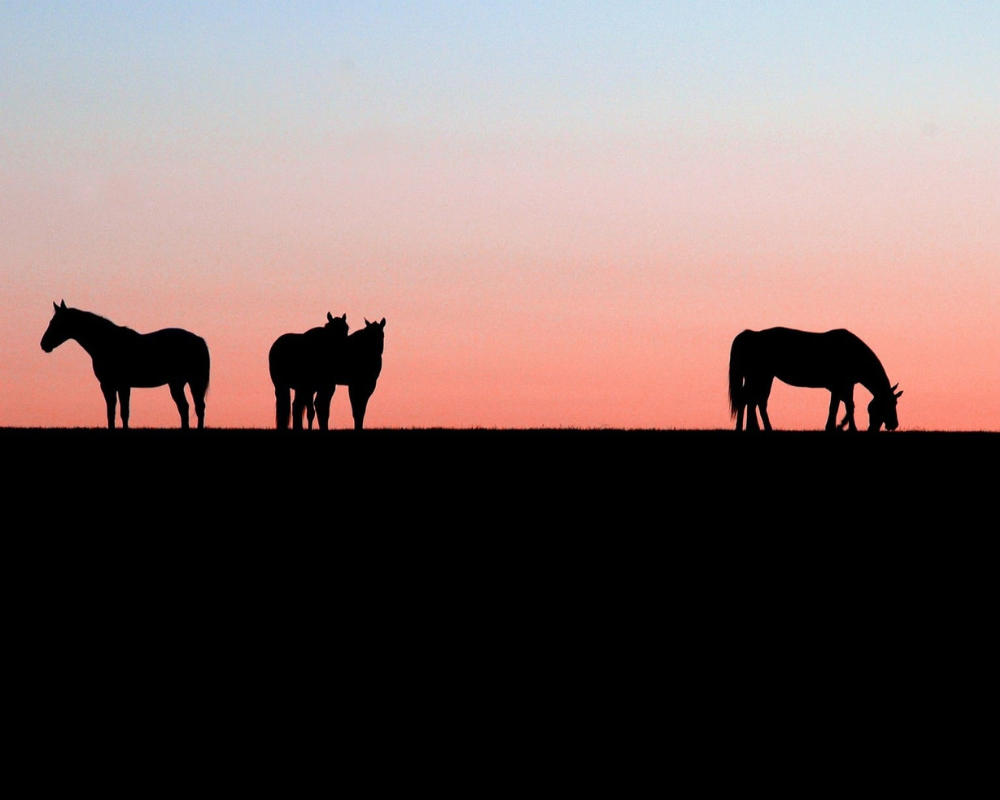

This instinct can cause negative behaviour which can include – calling and fence jumping if in a field. Box walking, weaving, cribbing and aggressive behaviour if stabled. Napping, rearing and bolting if being ridden.

There are also plenty of benefits of this natural instinct which you can use, for example –
1- if a horse is scared of an object, get another horse to go past it first.
2- when trekking, firstly go out with others, then go in front to gain the horse’s confidence.
3- when loading for the first time use another horse to go in first.
4- whilst jumping, have his field mates on the other side of the fence (at a safe distance, of course, and only if your horse is not too forward) to encourage them to go over.
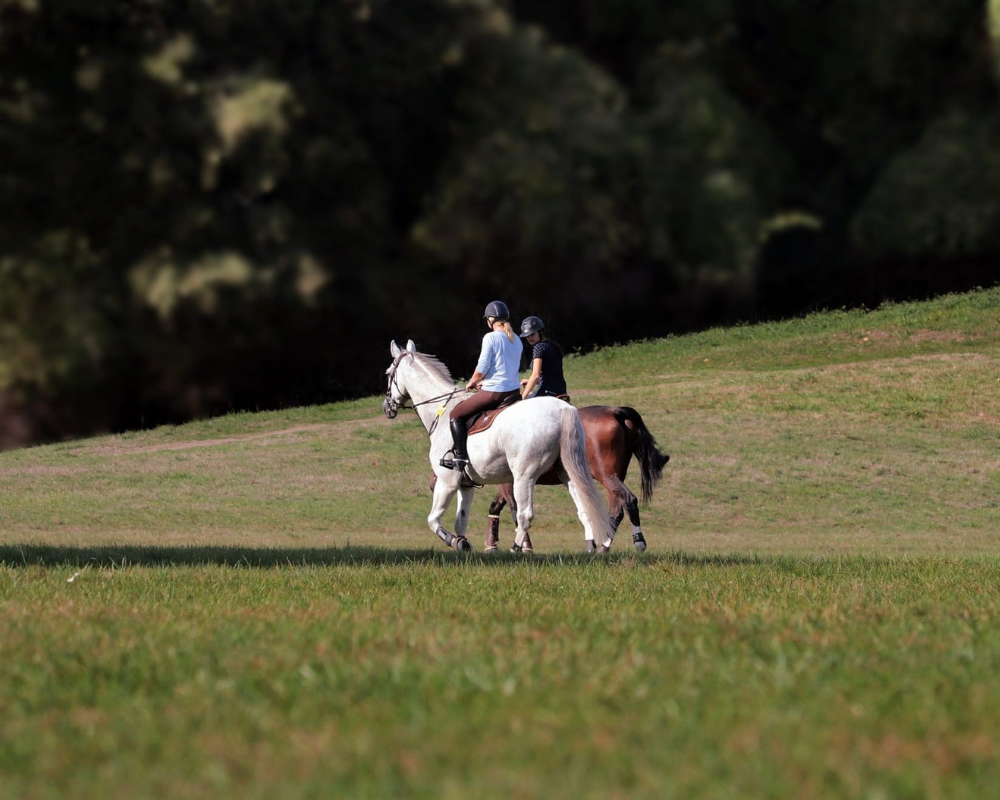

Gaining the horse’s confidence to be independent must be done in stages. It would be detrimental to your ongoing connection with your horse, if you suddenly took him away from all his mates and expected him to behave. Do it slowly, for example, take him out of his field on his own just through the gate, feed, groom and do basic behaviour exercises, and afterwards just put him back with his friends. Next day, increase the time and distance. Taking things slowly and progressively will benefit all in the long run. Slowly is more quickly.
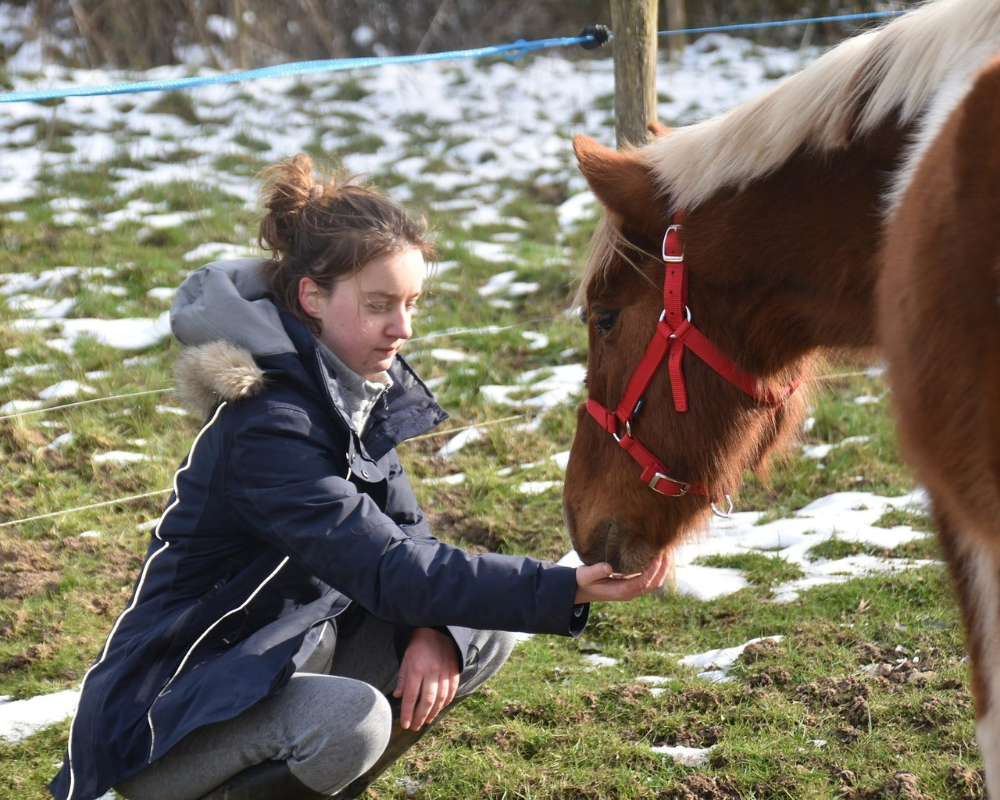
To take flight not fight

A horse’s natural nature will mean it will run away and take flight from anything it is unsure of.
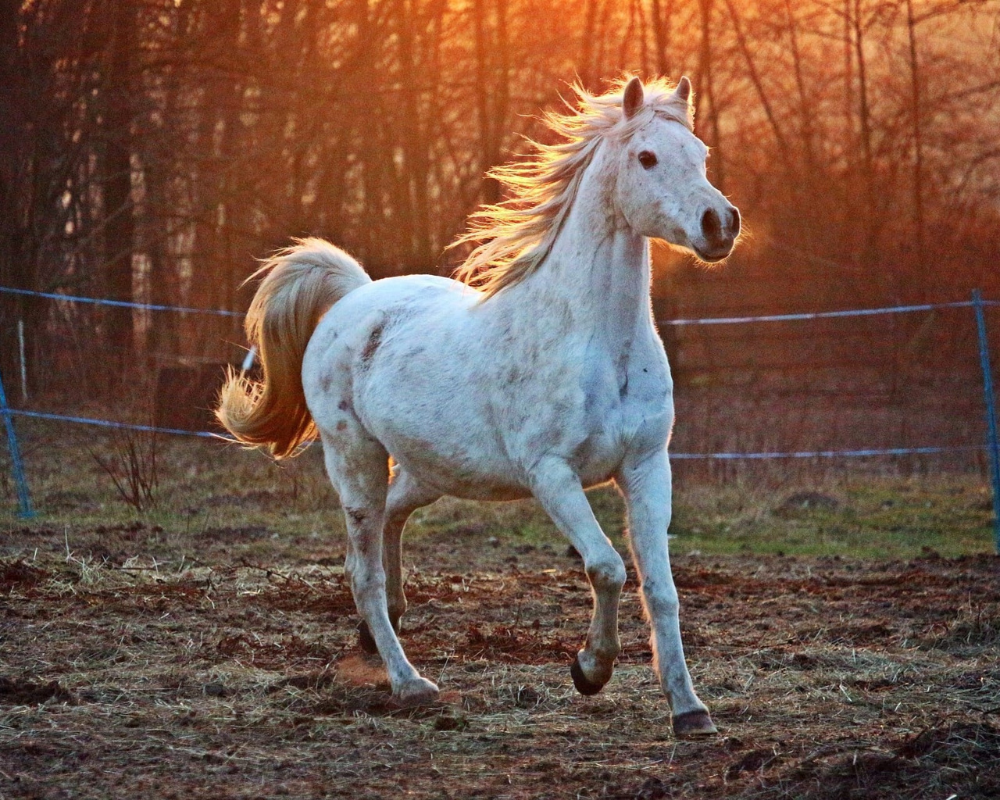

His eyes are set on the sides of his head with a blind spot directly in front and behind, with very poor perception of depth. This is why something can be quite far away but he will react sharply. Your horse will react to any movement so, for example, leaves blowing at a different speed to others on the same tree will attract your horse’s eye, but you may not even notice.
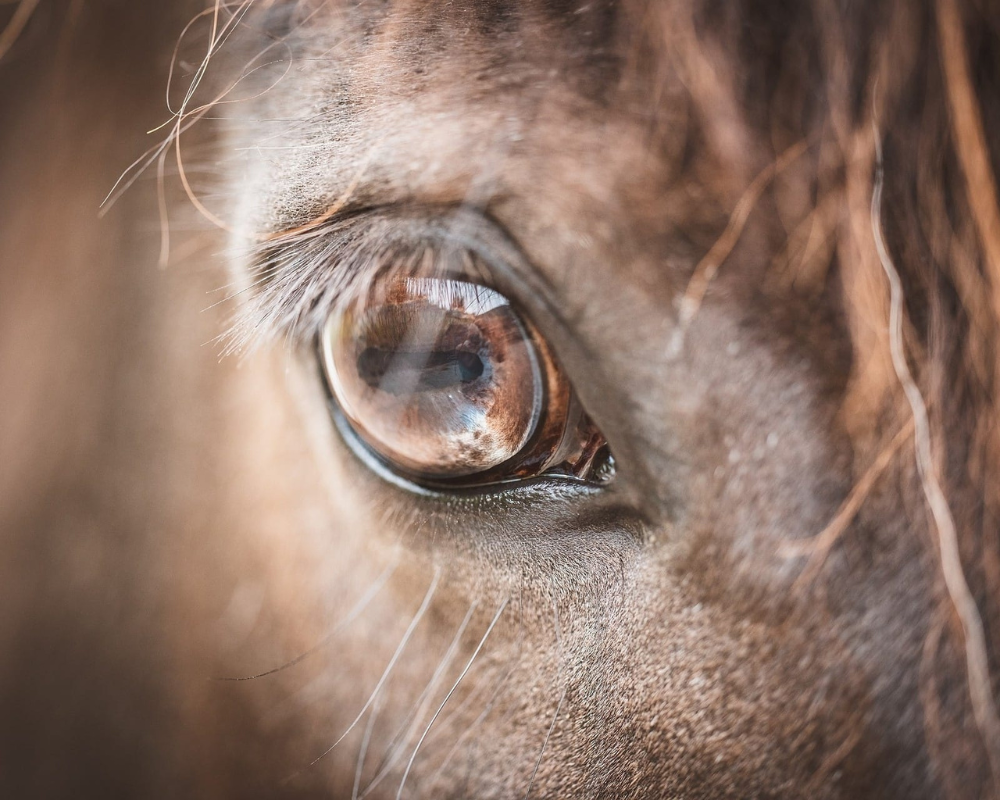

As a flight animal, his hearing and smell is excellent (generally). He can pick up sounds and smells he relates to negative outcomes way before you will. I run a riding centre in a country park and every year they have a steam engine rally. The little engines go straight past the horse’s field and, although they have never had a bad experience with them, all the horses in the field gallop around snorting, signalling danger to each other. As a result, whenever the whistle is blown, even if the engine is nowhere near and I can barely make out the noise, my horse will instantly poo and I can feel his stress level rise.

If trapped, for example in a stable or in the field, the flight instinct can be superseded by the fight mode. This can result in the horse kicking, biting and striking out. A horse can quickly turn from half a tonne of scaredy cat to half a tonne of pure muscle set to kill. This is why it is so important that you pick up on the horse’s signs and build up slowly so as not to push the fight button.
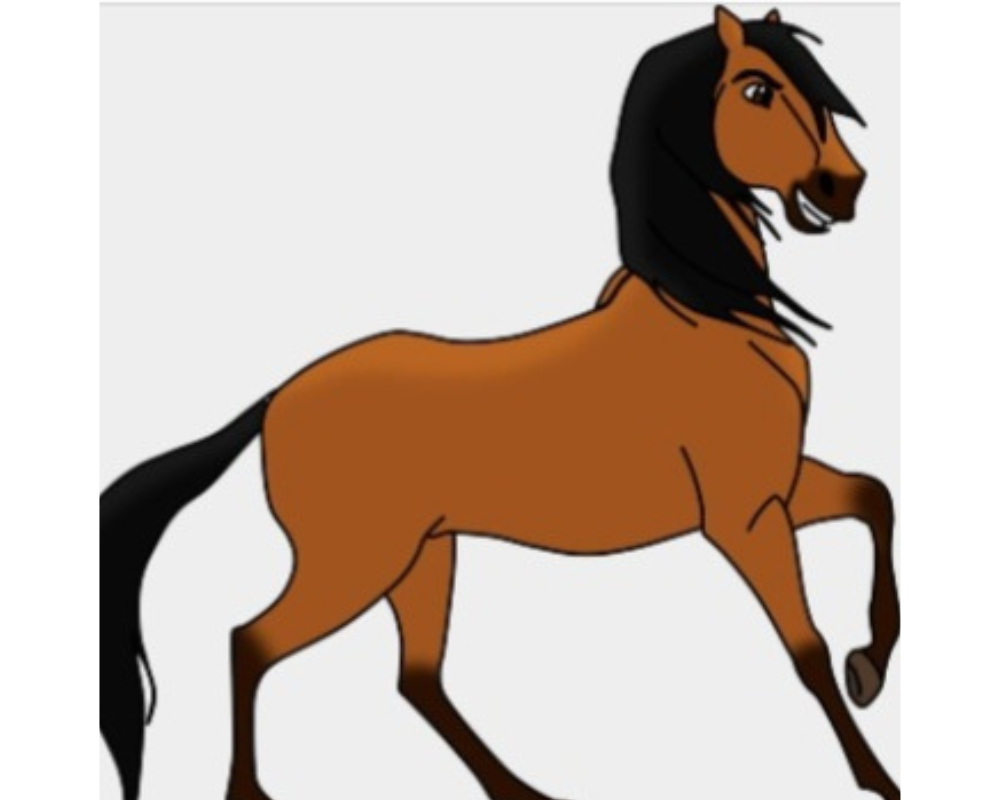

A horse will not usually be aggressive, if he is, he is trying to tell you something. A simple example is biting whilst doing the up girth, he is just saying “don’t do it up tightly, I don’t like it”. This does not mean this behaviour is acceptable but a solution must be found. In this example, giving a treat when the girth is done up gently will turn a negative experience into a positive.
TO HAVE A PECKING ORDER

In the wild horses will have a lead mare and stallion leader. The stallion will protect the herd, circling it and fighting any other stallions that threaten his position. The mare will generally keep order from within, quickly dishing out punishment, if needed, and controlling the herd routine. If the mare says it is ok to eat, then eat. If the mare says we are going for water, then that’s where the herd goes. This mare will also make sure she is neither in front of the group, so no scary objects will get her, nor behind so tigers etc can attack. This mare and stallion have a great responsibility to protect the herd and, as a result, can have the most difficult behaviour but also be the most rewarding to work with.
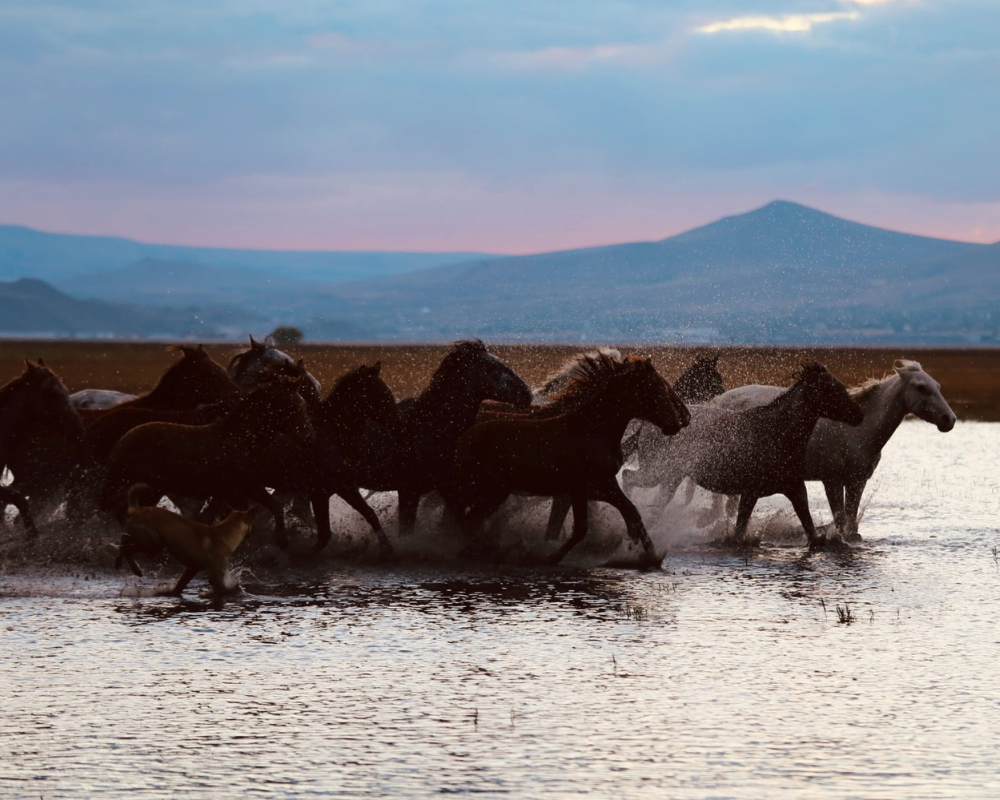

When a horse first goes into a herd they will have to find their position which can be very difficult. If a dominant character, there will be fighting, if passive they will usually be accepted quite quickly. I have found the best way to introduce a new member to the herd is to let them first meet over a stable door or possibly in hand (both horses held but only if you are really competent and ready for striking out and quick movement). After they have met all herd members in this way, or at least all the most dominant, then turn the new horse out with just the head horse for a while, adding the remaining herd slowly. It is never easy to add a new member so try to do this as little as possible.
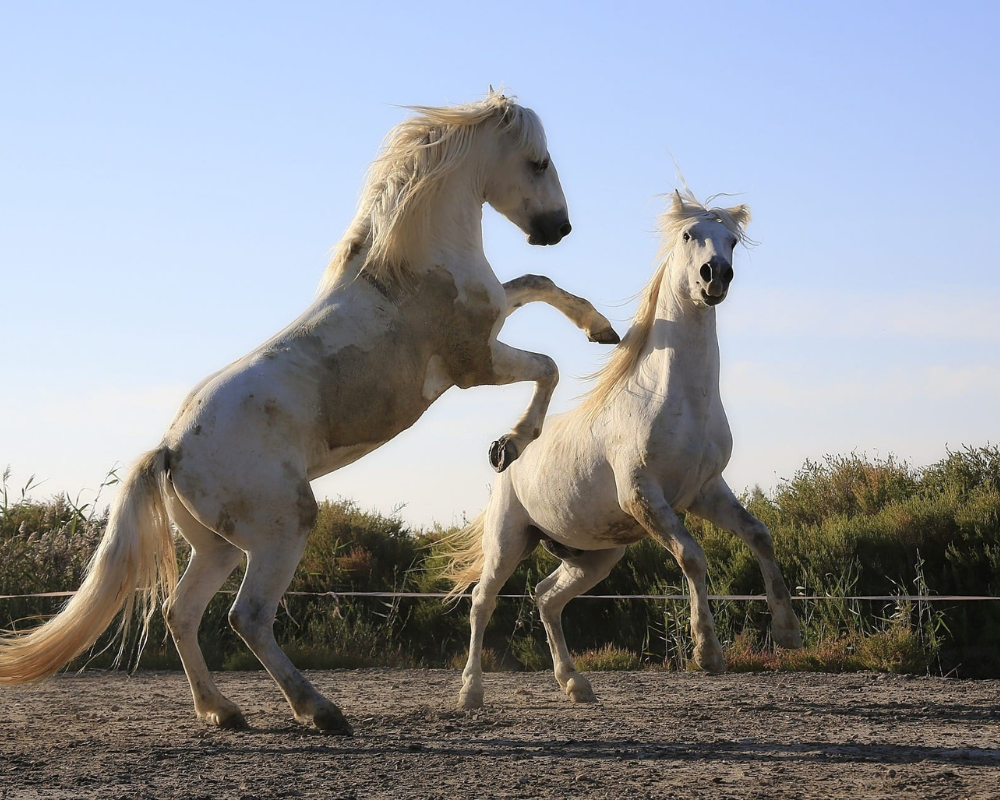

When feeding a herd hay in the field, remember the most dominant will eat first then the weakest, who usually need the feed the most, will get the last pile. Because of this you should always put several extra piles out, leaving all at least two kicking distances between each.


The horses will then buddy up with one or two friends. This can cause issues when that one friend leaves the herd but with patience and time this will get easier.
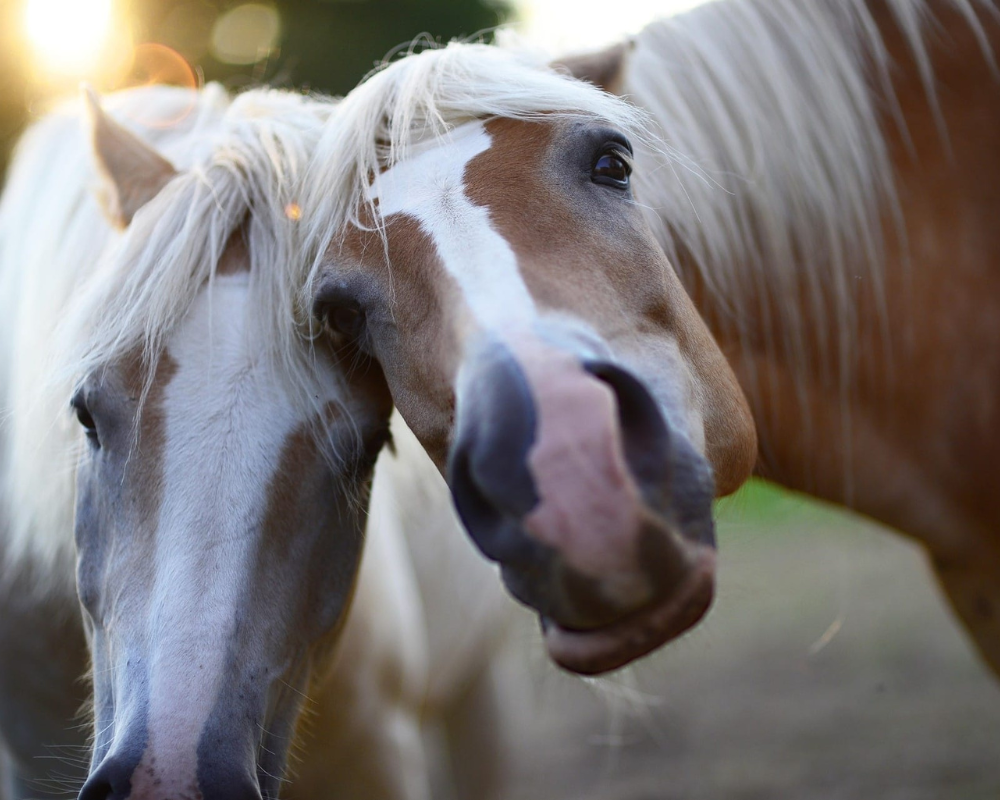
TO Eat little and often

The horse is a grazer so needs to have his intestines full at all times, and cannot cope with a large intake of feed in one go. This is because, in the wild, he may have to run away from prey at any time, so should not be restricted by a full stomach. Also the horse’s massive intestines act as central heating.
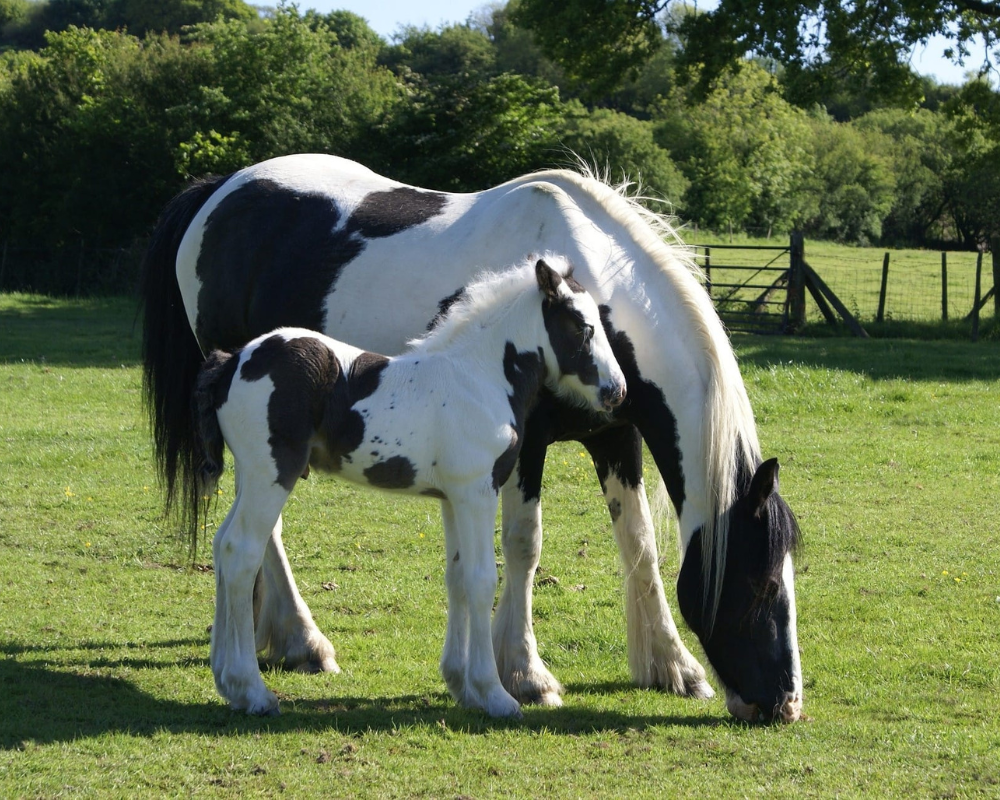

It is very important you follow this natural instinct for both physical and mental wellbeing. If food is rationed, this can result in – aggressive behaviour, box walking, cribbing, weaving and stress-related issues including ulcers and colic.
TO HAVE A ROUTINE

Horses in the wild generally follow the same routine, grazing, sleeping and drinking in the same order at similar places.

It is good practice to follow this as much as possible in your horse’s life. An easy example is, if you feed your horse at different times of the day, they will be on constant lookout for you. Each time they think they see you, little amounts of adrenaline will be secreted. If this continues throughout the day, what feed you give will not be as useful because it will be replacing the adrenaline used. If you feed at the same time they will be expecting you so less adrenaline used and for a shorter period.
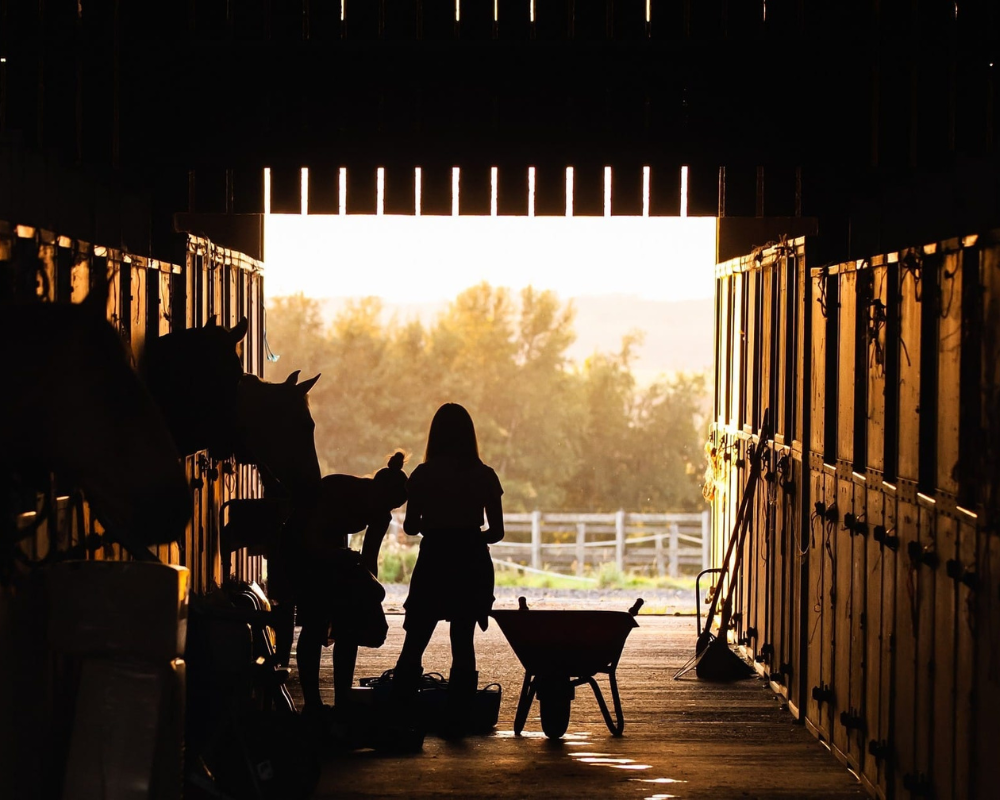

If a horse knows their routine they will start to fit their sleeping and eating around your activities, therefore leading to the horse becoming the most settled and healthy they can be.
SLEEPING

Horses will sleep standing up, this is so they can run away, if needed, at any time.

If a horse is comfortable, it will lie down to sleep. This is essential to give their legs a rest and to recharge mentally. It is important to provide enough clean bedding in the stable to encourage this.
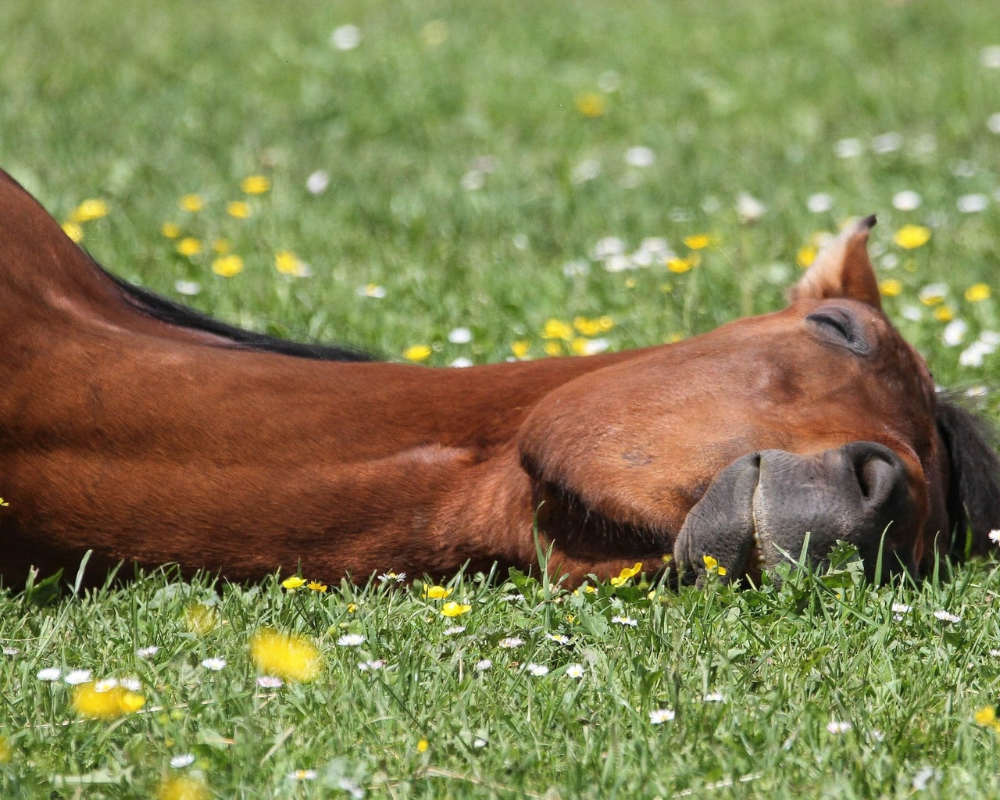

Whilst lying down in the field, some members of the herd will stand guard.
Final Thoughts
Your horse has been taken from their natural surroundings but they still have all their natural instincts.
As a result, it is your job to try to mimic their natural lifestyle as much as possible. If you do this and learn to listen to your horse, make any changes as gradually as you can, and be as caring as possible, your connection to your horse will greatly benefit.
You must become the head mare or stallion and with this comes great responsibility to provide all your horse’s needs and their safety.
